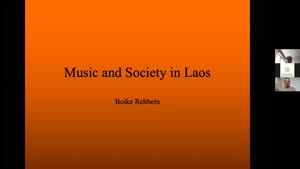Cambodia’s Youth as Change Agents for a Sustainable Transformation? - Dr Michael Waibel - Universität Hamburg
- Lecture2Go
- Videokatalog
- F.5 - Geisteswissenschaften
- Asien-Afrika-Institut
- Youth and Ageing in Southeast Asia
Videokatalog
Cambodia’s Youth as Change Agents for a Sustainable Transformation?
In the past decades, Cambodia witnessed an economic boom, accelerating unsustainable urbanization and resource-intensive lifestyles, particularly of the emerging urban middle and upper classes. Estimates forecast a continuation of this development and a doubling of the urban population in Cambodia by 2030 and a doubling of the total building stock in Phnom Penh by 2050. This dynamism and the urgency of a sustainability transition are the rationale of the multi-disciplinary Build4People project (full title: “Buildings for People: Enhancing Quality of Life through Sustainable Urban Transformation in Cambodia”). The key objective of the Build4People project is to support the reconfiguration of Phnom Penh’s urban development regime towards more sustainability and a better urban quality of life of all its citizens.
When analyzing transformational dynamics in Cambodia – a country with one of the youngest populations in the region – the youth might be considered as a key actor for change. Following significant political and socio-economic changes in the last decades, today’s youth is confronted with a vastly different context than previous generations. This includes new possibilities, freedoms, and global influences, but also continuities of patrimonial and hierarchical structures. Being considered as one of Cambodia’s greatest assets, youth are however suffering from many vulnerabilities and a lack of political representation. Furthermore, its chances for talent growth, vocational / technical and global knowledge skills have been poorly evaluated in global rankings.
---
The population of Southeast Asia has experienced a sevenfold increase in less than 120 years to a total of more than 650 million people, which compares to Europe with around 740 million. Southeast Asia’s population is developing at a high speed, and although the growth of the elder is rapidly increasing, Southeast Asian nations have relatively young populations, which make them highly attractive for companies because the region’s GDP is growing expansively.
Using the young population structures and aging of Southeast Asian populations as a lens, international scholars will discuss important current issues, such as connections between youth and violent conflicts, the categorisation of age groups in Southeast Asia and how youths express themselves in cultural productions.





